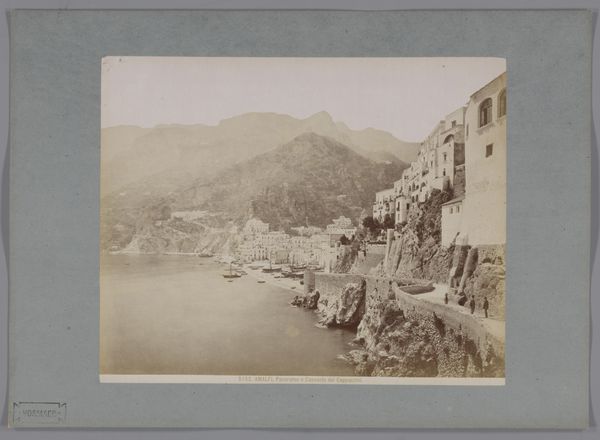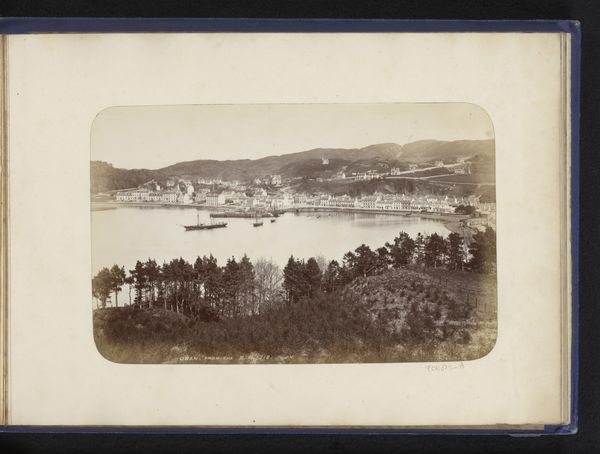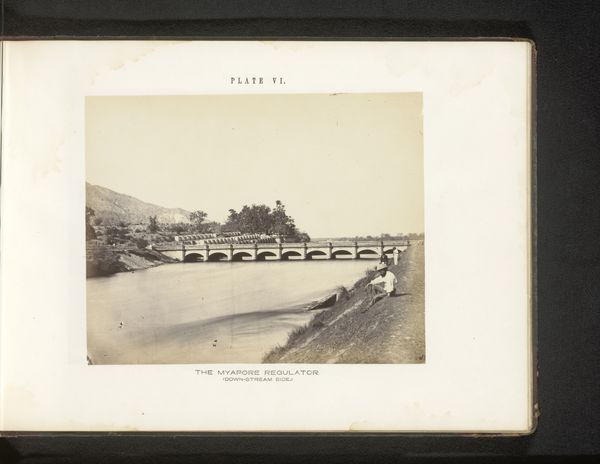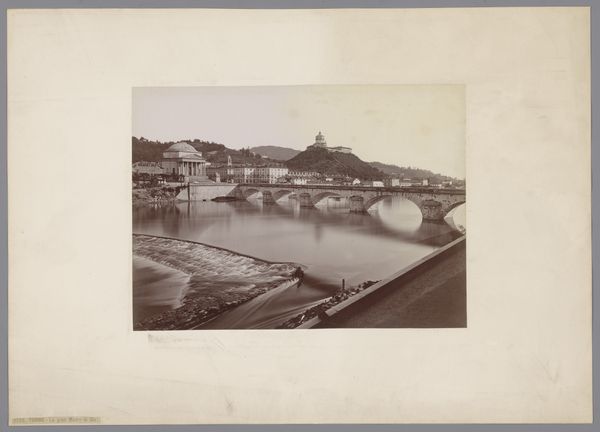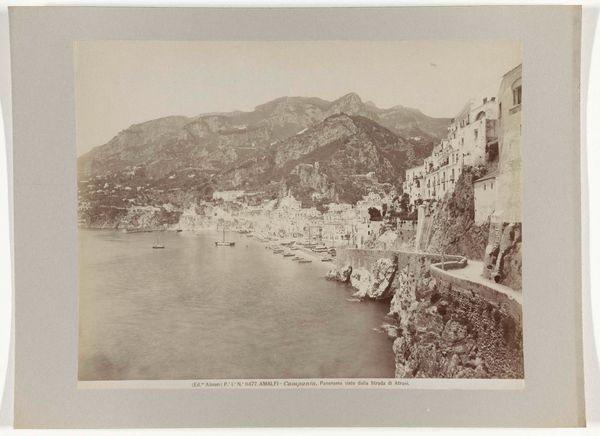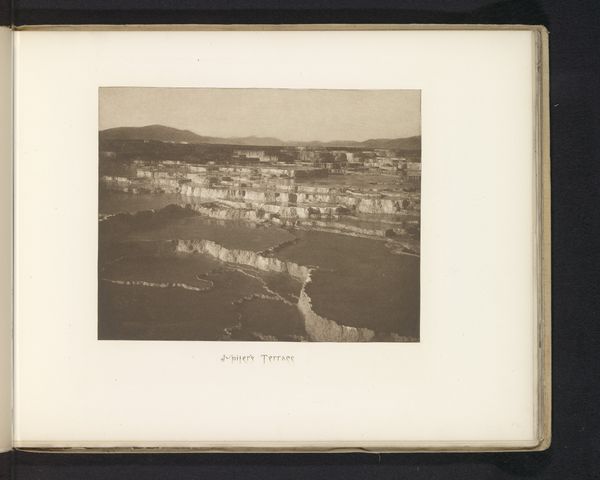
Gezicht op trappen en gebouwen aan de oever van de Ganges bij Haridwar before 1867
0:00
0:00
print, photography, gelatin-silver-print
# print
#
landscape
#
photography
#
ancient-mediterranean
#
orientalism
#
gelatin-silver-print
Dimensions: height 182 mm, width 232 mm
Copyright: Rijks Museum: Open Domain
Curator: The serenity! There’s a kind of hushed reverence in this vista. Editor: It does have a calming effect. This is a photograph, a gelatin-silver print dating to before 1867, created by Thomas George Glover. It's titled “Gezicht op trappen en gebouwen aan de oever van de Ganges bij Haridwar,” or "View of steps and buildings on the banks of the Ganges at Haridwar." It captures a scene of the Hur-kee-puyree Ghat, a sacred bathing place. Curator: The Ganges... a powerful symbol, not just geographically but spiritually, a connector between the earthly and divine. You can almost feel the weight of centuries of belief concentrated on that shore. I'm immediately drawn to how the buildings seem to rise organically from the river, almost like natural extensions of the land itself. Editor: Indeed. That blending is key, and what fascinates me is how a western photographer approaches such a deeply significant site. How do you reconcile capturing such an ancient place in an age when empires are encroaching across Asia, hungry for resources and control? It raises so many questions about the role of the artist as documentarian versus interpreter, even exploiter, perhaps. Curator: Perhaps, but there's also the simple human desire to witness and remember sacred places. Note the gentle use of light here; Glover isn’t sensationalizing but bearing witness to its deep-rooted symbolic importance. You also can see that architecture echoing earlier forms: that central tower could be something seen in classical western designs. It's that synthesis that I think reveals cross-cultural admiration, and how images circulate across global boundaries and influence one another. Editor: An intriguing interpretation. Yet, for me, those questions of power and representation still loom large, informing the consumption of exoticized landscapes. However, the very act of photographing it transforms this into something accessible—to western audiences, specifically. Curator: True, that tension will always be there, and we cannot discount its shadow. Still, standing here today, it allows us to consider the enduring spiritual resonance of this place and to better consider what symbols endure and why they still command our attention. Editor: Agreed. I leave with renewed awareness of how historical context forever frames our view and, possibly, distorts how we consume our experience of the artwork itself.
Comments
No comments
Be the first to comment and join the conversation on the ultimate creative platform.
